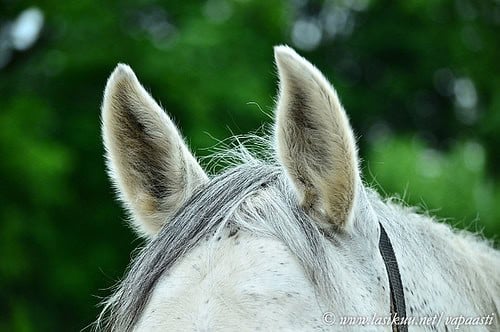Horses are remarkably expressive animals that communicate through subtle body language cues. Among these signals, ear movements and positions stand out as one of the most reliable indicators of a horse’s emotional state and intentions. Unlike humans who primarily communicate verbally, horses rely on a sophisticated non-verbal language system where ear positioning plays a crucial role. Understanding what a horse’s ears are telling you can significantly improve your relationship with these magnificent animals, enhance safety around them, and deepen your appreciation for their complex emotional lives. This article explores the fascinating world of equine ear communication and provides insights into how to interpret these important signals.
The Anatomy of Horse Ears

Horse ears are remarkably mobile structures designed for both exceptional hearing and communication. Each ear contains ten muscles (compared to just three in human ears), allowing horses to rotate their ears 180 degrees independently of each other. This impressive range of motion enables them to locate sounds with pinpoint accuracy while simultaneously using ear positions to express their internal state. The external ear, or pinna, funnels sound into the ear canal and toward the eardrum, amplifying sounds that might be imperceptible to humans.
The shape of equine ears varies slightly across breeds, with some having shorter, rounded ears while others display longer, more pointed ones. Despite these variations, all horses use the same basic ear positions to communicate their emotions. The remarkable mobility of these structures allows horses to constantly scan their environment for potential threats while simultaneously engaging with other horses or humans through their ear language. This dual-purpose functionality makes horse ears one of the most important features for both survival and social interaction.
Forward-Facing Ears: Attention and Interest

When a horse points both ears forward and slightly toward each other, they are displaying focused attention and interest in something ahead of them. This is often called the “pricked” or “alert” position. This ear position indicates that the horse is mentally engaged with what they’re seeing or approaching. It’s generally a positive sign that shows curiosity rather than fear. You’ll commonly observe this position when introducing your horse to a new environment, person, or object, or when they’re enjoying an activity like a trail ride.
The forward-facing ear position can also indicate that your horse is processing new information and trying to understand something unfamiliar. If you’re working with your horse and notice their ears pointing forward attentively, it often means they’re concentrating on what you’re asking them to do. This engaged state is ideal for training sessions, as it signals that your horse is mentally present and receptive to learning. However, it’s important to distinguish between relaxed forward ears and tense forward ears, which might indicate heightened alertness or potential anxiety.
Relaxed Ears: Contentment and Calmness

Perhaps the most reassuring ear position to observe in your horse is when their ears are held in a relaxed position to the sides, neither pointing forward nor pinned back. This neutral position, sometimes described as “floppy” or “droopy” ears, indicates a content, relaxed, and calm horse. When you see this ear position, you can be confident that your horse is feeling comfortable in their environment and with your presence. It’s common to observe this position when a horse is resting, grazing peacefully, or standing quietly while being groomed by a trusted handler.
Relaxed ears are a reliable indicator that your horse is in a positive emotional state, free from stress, fear, or aggression. For riders and handlers, this is the ideal baseline state to achieve before beginning any interaction or training session. If your horse transitions from this relaxed ear position to a more alert or defensive position, it signals a change in their emotional state that warrants your attention. Developing an awareness of your individual horse’s “normal” relaxed ear carriage will help you better identify subtle changes that might indicate emerging discomfort or concern.
Pinned-Back Ears: Warning Signs
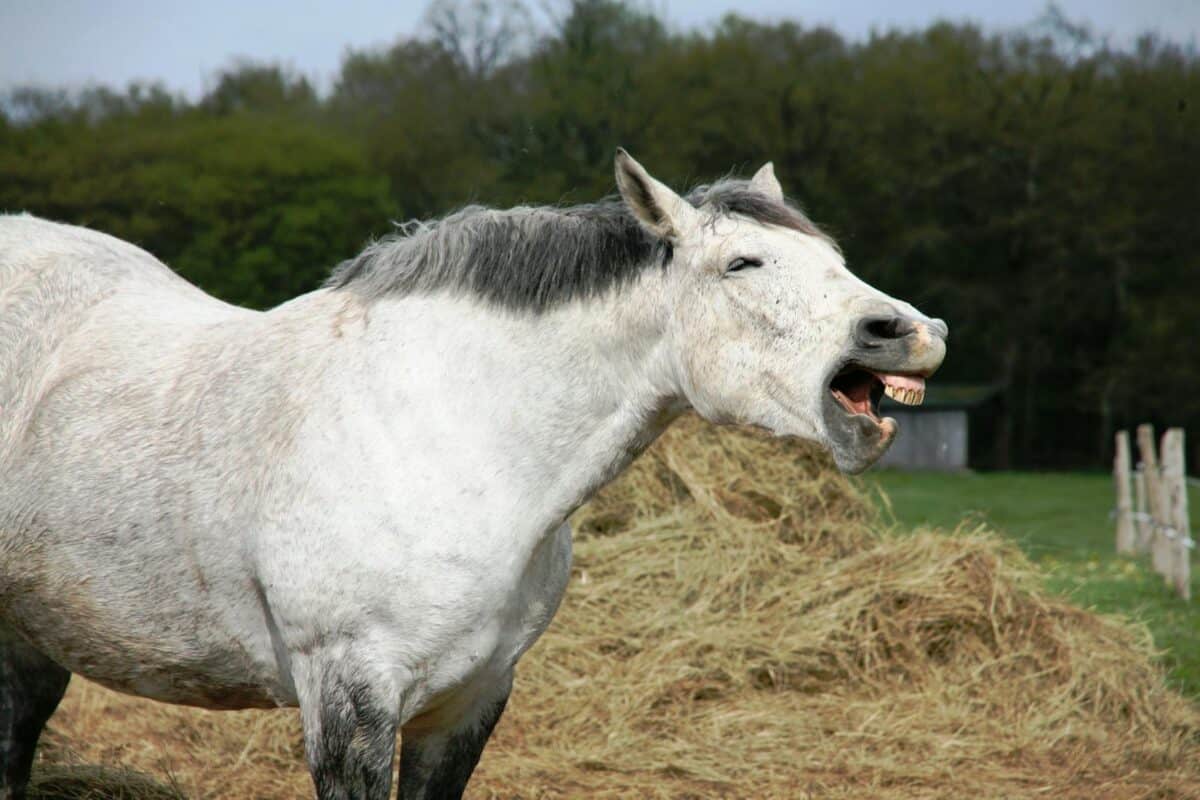
When a horse flattens their ears tightly against their neck or head, this is one of the clearest warning signals in equine body language. This position, commonly called “pinned ears,” indicates negative emotions ranging from mild irritation to intense anger or fear. It serves as a communication tool that essentially says, “Back off” or “I’m uncomfortable.” Ignoring pinned ears can lead to escalating defensive behaviors such as kicking, biting, or striking. This position is part of the natural threat display that horses use both with other horses and with humans.
The severity of the ear-pinning often correlates with the intensity of the negative emotion. Slight backward tilt might indicate mild annoyance, while ears flattened completely against the neck typically signals imminent aggressive action. Context matters greatly when interpreting pinned ears. For example, a horse may briefly pin their ears when asked to perform a challenging task during training, when experiencing discomfort from equipment, or when establishing boundaries with another horse. Learning to recognize the early stages of ear-pinning allows handlers to address the cause of discomfort before the situation escalates to potentially dangerous behavior.
One Ear Back, One Ear Forward: Split Attention
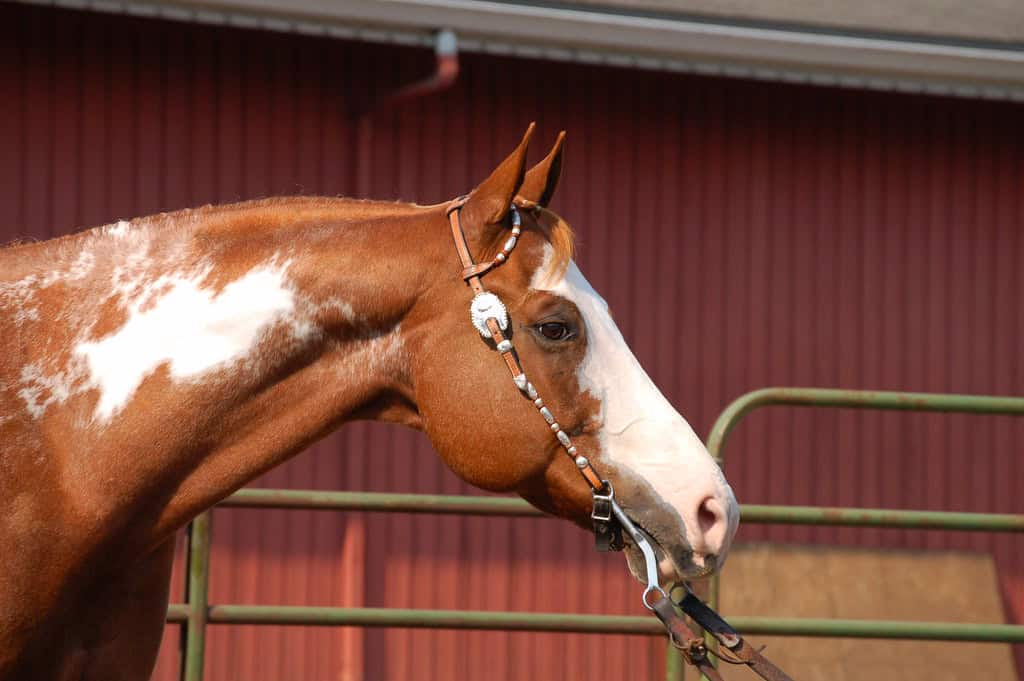
A fascinating aspect of equine ear communication is their ability to position each ear independently. When you observe a horse with one ear pointed forward and one ear turned back, they’re demonstrating split attention. This asymmetrical position often indicates that the horse is simultaneously monitoring something in front of them while keeping track of activity behind them. For riding horses, this commonly means they’re paying attention to the path ahead while also listening to their rider’s voice commands or environmental sounds behind them.
This divided attention can be perfectly normal and doesn’t necessarily indicate stress or concern. However, context matters when interpreting this ear position. If a horse maintains this position while also showing other signs of tension (such as a raised head, widened nostrils, or stiffened body), it might suggest they’re feeling uncertain or vigilant about potential threats from multiple directions. During training sessions, a horse that frequently alternates between focused attention (both ears forward) and split attention might be struggling to maintain concentration, possibly due to distractions in the environment or confusion about what’s being asked of them.
Rapidly Moving Ears: Processing Information
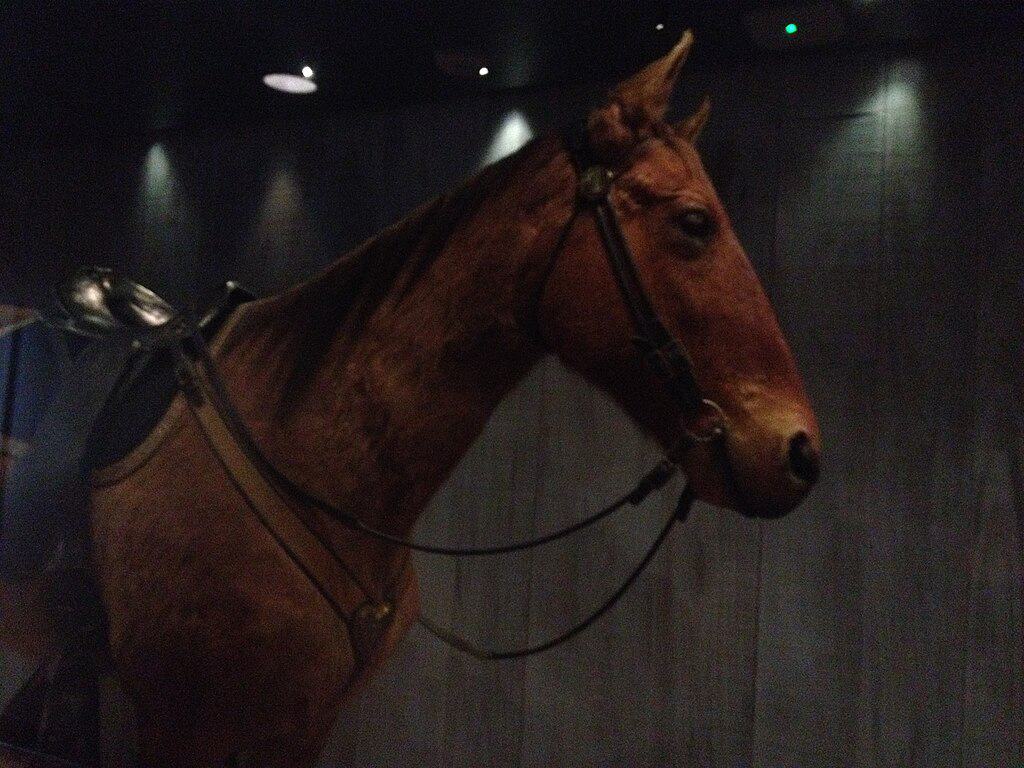
Horses with ears that swivel rapidly in different directions are actively processing multiple inputs from their environment. This dynamic ear movement indicates a horse that is alert and assessing various sounds and stimuli around them. You might observe this behavior in new environments, during transportation, or in situations with multiple horses or people present. These quick movements allow the horse to create a comprehensive “sound map” of their surroundings, which is crucial for their sense of security as prey animals.
While rapid ear movements can simply indicate normal environmental monitoring, excessive or particularly quick ear movements might suggest heightened vigilance or nervousness. A horse that can’t settle their ears into a more consistent position may be feeling overwhelmed by their environment or unable to identify a specific concern. For handlers, this presents an opportunity to help the horse focus by removing unnecessary stimuli or guiding their attention to something specific. With young or inexperienced horses, this rapid ear movement is particularly common as they learn to prioritize which environmental inputs deserve their attention and which can safely be ignored.
Ear Positions During Social Interactions

Horses are highly social animals that use ear positions extensively when communicating with other horses. In herd settings, dominant horses often use ear positions to establish and maintain social hierarchy. A dominant horse might approach a subordinate with ears slightly back (but not fully pinned) as a subtle reminder of their status. Subordinate horses typically respond with submissive signals, which might include lowering their head while keeping their ears in a neutral or slightly back position to acknowledge the higher-ranking horse’s status.
During friendly interactions, horses often approach each other with ears forward or in a relaxed position, sometimes with one ear focused on the other horse. Mutual grooming sessions—where horses stand side by side nibbling at each other’s withers and back—typically feature relaxed ear positions that indicate social bonding and comfort. When observing horses at play, their ears frequently shift positions rapidly, moving from forward (when initiating play) to slightly back (when responding to playful “attacks”), all while maintaining an overall relaxed demeanor that distinguishes play from genuine aggression. Understanding these social ear cues helps handlers recognize how their horses might perceive interactions with other equines.
Pain Indicators in Ear Positioning
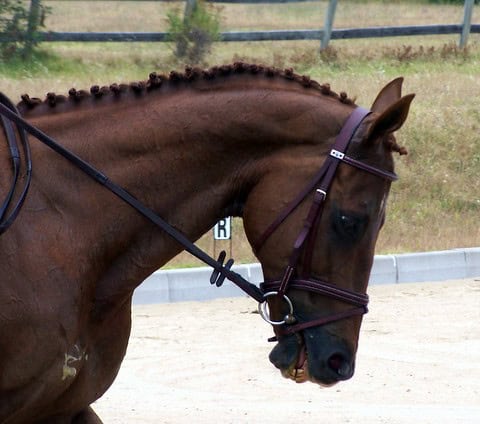
Ear positions can be valuable indicators of physical discomfort or pain in horses. A horse experiencing pain often displays asymmetrical ear carriage or holds their ears in an abnormal fixed position. For example, a horse with dental pain might hold one ear slightly tilted or cocked to the side of the painful area. Horses suffering from headaches or ear infections may hold the affected ear lower than the other or shake their head frequently while maintaining an unusual ear position. These subtle changes from their normal ear carriage can be early warning signs of health issues that require veterinary attention.
Beyond specific pain-related positions, horses in discomfort may also switch rapidly between different ear positions or hold their ears in a tense, rigid manner even when they appear otherwise relaxed. Pain can also manifest as incongruence between ear position and other body language—for instance, a horse that’s grazing (normally associated with relaxed ears) but maintaining alert or pinned ears throughout. Chronic pain often leads to overall reduced ear mobility and expressiveness. Responsible horse owners should establish a baseline understanding of their horse’s typical ear movements when healthy, making it easier to detect these potential pain indicators early.
Ear Positions During Training and Riding

During training sessions and riding, a horse’s ear positions provide valuable real-time feedback about their mental and emotional state. Ideally, a horse that is engaged in learning will alternate between forward-focused ears (when processing new information or commands) and relaxed positions (when performing familiar tasks comfortably). This pattern indicates a horse that is mentally present, willing, and confident in the training process. Frequent checking back toward the rider with one ear demonstrates that the horse is attentive to their handler’s cues and commands.
Problematic ear positions during training include persistently pinned ears, which may indicate physical discomfort from ill-fitting equipment, confusion about what’s being asked, or resistance to the training method. Excessively mobile ears that never settle might suggest anxiety or inability to focus. Some disciplines incorrectly encourage “obedient” ear positions—such as expecting horses to maintain their ears in a specific position regardless of environmental stimuli—which can suppress natural communication and create additional stress. Effective trainers recognize that allowing horses to express themselves through natural ear movements provides valuable information that helps refine training approaches and ensures the horse’s physical and emotional wellbeing throughout the process.
Breed and Individual Differences in Ear Expression

While the fundamental ear positions and their meanings remain consistent across all equines, there are notable variations in how different breeds and individual horses express themselves through ear movements. Some breeds, particularly those with Arabian ancestry, tend to have more expressive and mobile ears that communicate with greater subtlety and frequency. Draft breeds often have slightly less ear mobility but may compensate with more pronounced positions. The physical structure of the ear itself—whether longer and more pointed as in Thoroughbreds or shorter and more rounded as in some pony breeds—can influence how obvious certain ear positions appear to observers.
Individual horses also develop personal communication styles that go beyond breed tendencies. Some horses are naturally more expressive with their ears, using minute adjustments to convey their changing emotions, while others may be more reserved in their ear communication. Factors such as past experiences, training methods encountered, and individual temperament all influence how freely a horse communicates through ear positions. Horses with a history of punishment for expressing negative emotions might suppress normal ear movements, making their communication more difficult to read. Experienced handlers learn to recognize and appreciate these individual communication styles, adjusting their interpretations accordingly for each horse in their care.
How to Develop Your “Ear Reading” Skills

Becoming proficient at interpreting equine ear language requires consistent observation and practice. Begin by spending time simply watching horses in relaxed settings like pastures, where they interact naturally with minimal human influence. Pay attention to how ear positions change in response to environmental stimuli, other horses, and different human interactions. Try to observe the same horses repeatedly to establish their personal baseline ear positions and movement patterns. Video recording sessions with your own horse can be particularly valuable, allowing you to review interactions in slow motion and notice subtle ear movements you might miss in real-time.
To advance your skills, practice making predictions based on ear positions. For example, if you notice your horse’s ears prick forward suddenly, try to identify what caught their attention. If their ears flatten briefly during grooming, experiment with different brush pressures to see if you can identify and resolve the source of discomfort. Consulting with experienced equine behaviorists or trainers can provide valuable feedback on your interpretations. Remember that ear positions never exist in isolation—they should always be read in conjunction with other body language signals such as eye expression, nostril dilation, tail position, and overall muscle tension. This holistic approach to equine communication dramatically improves your ability to understand and respond appropriately to your horse’s changing emotional states.
Conclusion: The Language of Listening

The remarkable expressiveness of horse ears offers us a window into their emotional world, helping bridge the communication gap between our species. By developing a nuanced understanding of ear positions and movements, we gain invaluable insights that enhance safety, improve training outcomes, strengthen bonds, and contribute to better welfare for our equine companions. Recognizing that horses are constantly communicating through these subtle signals encourages us to approach them with greater empathy and respect for their emotional experiences.
As prey animals that evolved to detect threats before they become immediate dangers, horses have developed this sophisticated ear language as a survival mechanism. When we learn to “speak horse” by interpreting their ear positions correctly, we honor their natural communication style rather than expecting them to adapt entirely to our human methods. This creates more balanced relationships based on mutual understanding. Whether you’re a competitive rider, recreational horse owner, or equine professional, developing fluency in the language of horse ears will transform your interactions and deepen your appreciation for these sensitive, intelligent animals.
- The Sacred Buffalo in Plains Indian Traditions - August 9, 2025
- How Wildfires Influence Animal Migration and Habitats - August 9, 2025
- The Story Behind the Bison’s Comeback from Near Extinction - August 9, 2025

